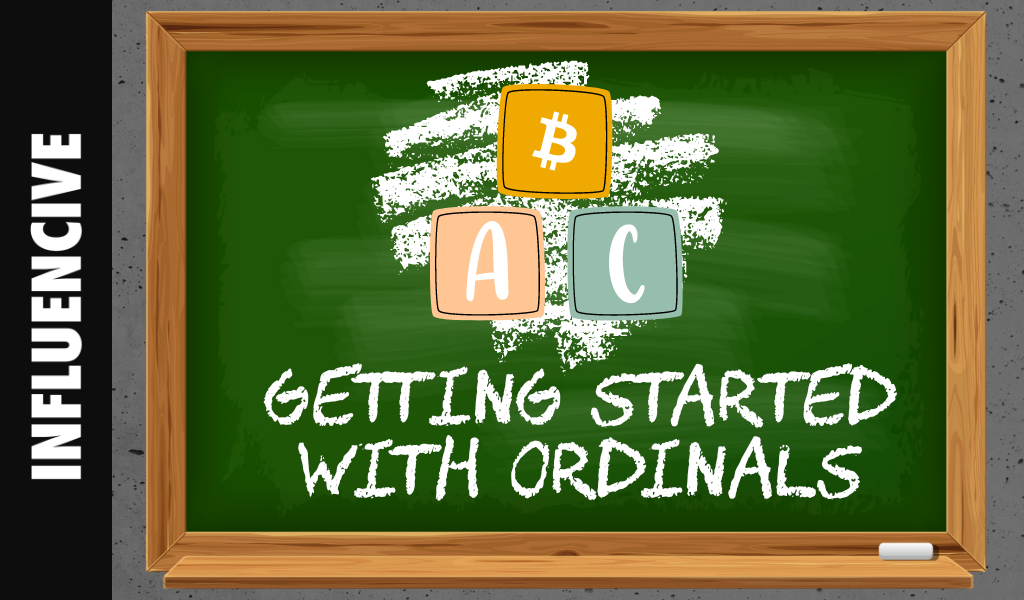One of the most frequently asked questions Bitcoin Ordinals OGs get is, “How do I get started?” Co-Host of Neo Tokyo News’ Degen Digest, ButWouldYa, posed this question to me last week during an episode. It’s an excellent query that momentarily stumped me because the abundance of information is scattered across various articles and threads, making it challenging to think of one central point of info.
If I, with nearly a year of experience in Ordinals, had difficulty organizing my thoughts, I could only imagine the confusion a newcomer might feel. Therefore, I’ve put together a basic guide on how to kickstart your journey into Ordinals. While there’s much you can explore on the protocol, let’s focus on getting your foot in the door and identifying the essential sites and apps.
Choosing the Right Wallet
Before anything else, you’ll need a wallet to store your Ordinals and execute transactions with. The most commonly used wallets are Xverse and Unisat. Honourable mentions go to OrdinalsWallet and Leather, who you should explore also.
It’s important to note that Unisat does not support Cursed Inscriptions.
Although all four work well, Xverse stands out as the most user-friendly with frequent feature updates. Personally, I use Xverse for “NFT” Ordinals like art and PFP collections, and Unisat for BRC-20 tokens. Remember to store your seed phrase offline, avoid sharing it with anyone, and be cautious when prompted to input it anywhere.
Understanding Wallet Addresses
This next part does not apply to Unisat wallets as the address associated with each wallet can both store inscriptions and make payments.
In Xverse, you’ll have two Bitcoin addresses—one for purchases and another dedicated solely to Ordinals inscriptions (Taproot address). Avoid sending Bitcoin to the Taproot address or inscriptions to the Bitcoin payments address.
There are ways you can recover assets sent to the wrong wallet address, but this can sometimes lead to complications, including unintended loss of other assets stored in that wallet. On that note, it’s important to remember that while Ordinals development has made amazing progress in the past year, it’s all still very new and buggy even now (yes, you are still early, anon.)
Funding Your Wallet

Now that you’ve got your wallet set up, you’ll need to purchase Bitcoin and send it to your self-custodied wallet. For ease, it’s recommended to use a trusted centralized exchange for this purpose. Alternatively, changenow.io is a good bridge to use, where you can swap from most coins over to Bitcoin.
If using Xverse, send the purchased BTC to your Bitcoin address that starts with a ‘3.’ Again, for Unisat, there will only be one address on display in the extension and you can send BTC to it just fine. Once your BTC has arrived, you’re almost ready to get into the fun part of collecting art and flipping degen mints.
The Different Types of Platforms
There are several marketplaces and platforms to choose from, each catering to different preferences and serving various functions:
- MagicEden: Collections, rare sats, Bitmap, art
- Unisat: BRC-20, Atomicals
- Gamma: Art
- BestInSlot and OrdinalHub: Collection aggregators
- OrdinalsWallet: Collections, Bitmap, TAP tokens
Choosing An Ordinals Project
Before making a purchase, explore different Ordinals projects and check out what people are saying about them on social media. Look at floor prices and trading volumes to identify collections currently in demand.
Platforms like Magic Eden provide a ranking of top projects, much like what we’re used to with OpenSea and Blur over on Ethereum. For a more detailed analysis of a collections statistics, OrdinalHub is one of the best sources of information.
Buying Your First Ordinal
The process of buying an Ordinal is similar to purchasing ETH NFTs. Pick a collection, choose an Ordinal, and click on “buy now.” Confirm the transaction in your Xverse wallet, and you’re done. Be patient, as transactions may take longer compared to ETH NFTs. Platforms like Magic Eden may have items in pending status due to the longer transaction times.

Over on Unisat.io for the BRC-20 curious, the process of buying a token is also a lot like buying an NFT. The seller creates a “transfer inscription” with the amount they wish to sell, and then lists it the same as if one would list an NFT.
This means you you’re not able to input a specific amount you want to buy, like you would on an exchange or a DeFi app like UniSwap. Nevertheless, BRC-20s are gradually being listed on CEXs, providing the option to purchase them in the conventional manner.
final thoughts
As a beginner, start small and learn by doing. The idea that Ordinals are too technically difficult to operate for those unfamiliar with the protocol is a myth. Clunky? Yes in some aspects, but the processes involved are not a lot different to those who use MetaMask or Phantom wallets.
Avoid making huge investments right away, unless you are buying my bags (for legal reasons, that’s a joke) and stick to the guide provided to make your first Ordinal purchase a seamless experience.
In due course, I’ll share my perspective on the best accounts to follow in the Ordinals space. Learning from these individuals has greatly accelerated my understanding, and it can do the same for you.
Helpful Videos
- Xverse Set Up
New to #Ordinals? 🟧
Xverse makes it EASY to get setup & safely store your collectibles, including Ledger support👇 pic.twitter.com/8LtWYLDyjw
— Xverse – Bitcoin Wallet for Web3 (@xverseApp) January 12, 2024
- Unisat Set-Up
Quick video how to setup a Unisat wallet so you can buy some Ordinals (@nodemonkes, etc) pic.twitter.com/WsX4zS07VH
— JA//MIE (@robotlovecoffee) December 31, 2023
Opinions expressed here are opinions of the Author. Influencive does not endorse or review brands mentioned; does not and cannot investigate relationships with brands, products, and people mentioned and is up to the Author to disclose. Accounts and articles may be professional fee-based.


